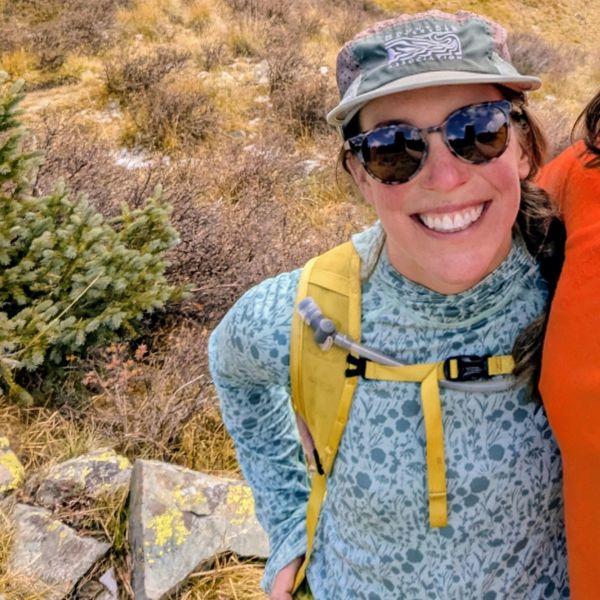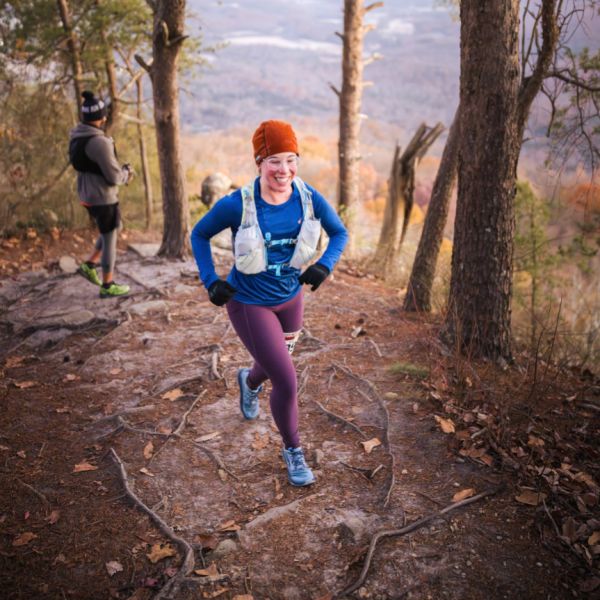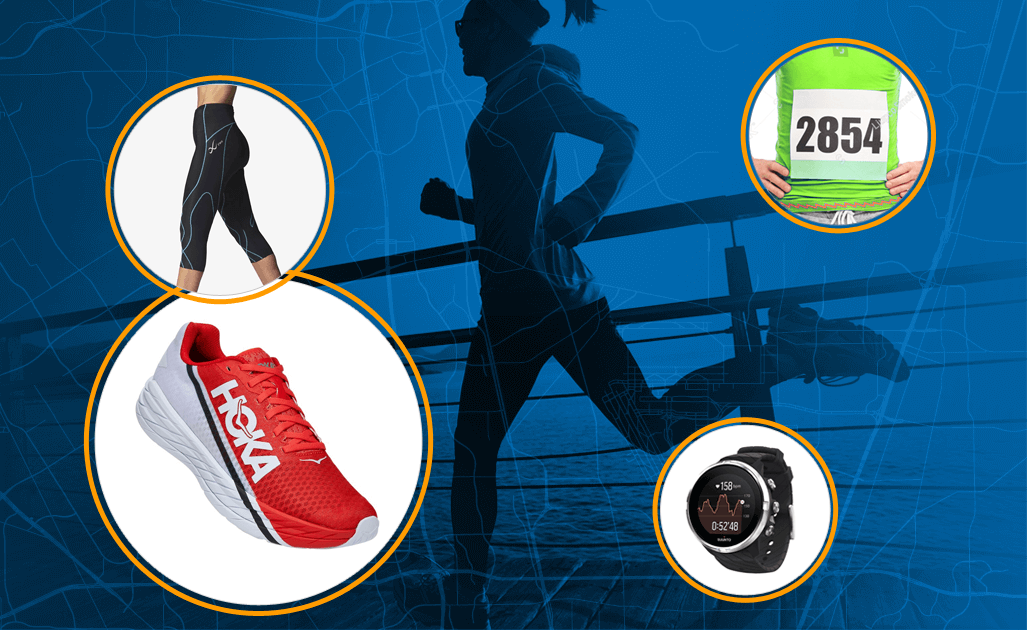If your world is buried in snow, what's stopping you from heading outside for some winter trail running?
If you're willing to work a bit harder than you would on the treadmill or road, it's time to give winter trail running a try.
.
Here's what you need to know...
Winter trail running on snow-covered ground presents unique challenges.
.
First and foremost, snow takes on many characteristics, all of which alter the ability to run in different ways. It can be...
.
❄ Crunchy and thin
❄ Powdery and thick
❄ Thin and icy
❄ Deep and slushy
❄ Ice-crusted
❄ Melting
❄ Hard-packed… and the list goes on.
.
The snow’s ever-changing constitution can make the decision to set forth on a trail run daunting.
.
But over time, if you get to know your local trail’s tendencies, you can quite accurately predict what type of snow lies where and when.
.
Either way, accepting winter trail running as an adventure and letting go of expectations surrounding the run is key to getting out there when conditions are against you.
.
In addition to the constantly metamorphosing terrain, winter trail running challenges include:
👉What would you add to this list?
It goes without saying, winter trail running is a dramatically different experience than running on clear trails.
.
Yet, the right gear can get you on the trails year-round, as long as you’re willing to change your perspective and accept the tough parts with open arms.
.
You’ll be happy you did once your eyes behold the beauty and magic of the wintry woods.
.
Here are SIX things to make running on snow-packed trails possible:
The winters in the mountains of southwestern Pennsylvania can maintain a one to two foot base, plus fresh snow continually falling, for two or three months.
.
Rather than forgo the trails, I grab poles, even on the less steep and technical single track.
.
Why? Poles stabilize the landing of the feet exceptionally well.
.
Poles are one piece of gear that has made a world of difference when running on snow-covered trails.
To make it through particularly deep sections...
Likewise, when descending, bracing with the poles prevents careening down slick embankments, and, again, keeps me standing firmly on two feet with minimal side-to-side slippage.
No real reasoning exists behind choosing one over the other.
.
Most of the time I grab the ski poles out of convenience, as they remain in my vehicle during ski season, although, without a doubt, I prefer the Lekis.
.
👉You can read more about the Leki Micro Trail Pro here.
.
Yes, it’s possible to get some winter trail running without poles, but once you’ve tried running through snow with poles, it seems senseless to go without them.
Combine poles with traction devices, and winter trail running is taken to a whole new level.
.
Traction devices slip over the toe and heel of your shoe and provide grip for ice and snow.
The Kahtoola Micro Spikes have completely diminished any fear of this happening, or of sliding down slippery hillsides.
.
They also make climbing easier, taking away that two steps forward, one step back feeling associated with ascending a snow-covered hill.
While Gore-tex trail running shoes keep the feet dry, they do not keep snow from getting into your socks. This is where gaiters come into play.
.
The pair I use are the Kahtoola CONNECT Gaiters - Mid, which are compatible with the Kahtoola Micro Spikes.
.
So, when donning the spikes, I always attach the gaiters.
.
If you want an all-around waterproof experience, gaiters paired with Gore-tex shoes are a must.
When the snow is so deep that traction devices provide little assistance, it’s time to step it up.
.
Enter trail running snowshoes.
.
For those who live in the mountains with easy access to trails, investing in a set of trail running snowshoes makes it possible to get out every day, no matter the quality of snow.
❄ Perfect for when the snow is not great for backcountry skiing.
❄ The best piece of gear when traction devices aren’t cut out for the job.
❄Ideal for exploring the higher elevation, more remote areas with the deepest snow, where very few people venture in wintertime.
❄ An excellent addition to the snow sport quiver: backcountry skis, traction devices and trail running snowshoes, creating a plethora of winter adventuring options.
.
The first day I took out the Atlas Race Snowshoes, the snow was deep but quickly melting, creating crumbly, sinking conditions.
Don’t get me wrong—the Atlas Race Snowshoes are comfortable
Still, I was disappointed on the first try.
.
Instead of writing them off as useless, I attributed the letdown to poor conditions and overly warm temperatures and waited for the next snow.
Sure enough, when I took them out again, they proved their worthiness.
.
On fresh powder, they move forward unencumbered.
.
At times, running feels natural, even playful, as you cascade down a steep slope, snow spraying up all around you.
.
On hard-packed snow, they perform the most efficiently and easily, making running less strenuous than when traveling through the deep stuff.
.
Winter single-track trail running vs. running on cross country ski trails
.
Thus, if you’re a runner set on maintaining a solid stride throughout with very few hiking breaks, taking snowshoes to groomed cross country ski trails may be the best option for you (just stay out of the ski tracks).
Now, to be clear, as wonderful as trail running snowshoes are for getting avid trail lovers outside in their most beloved places, the running is not easy, even on groomed tracks.
.
Perhaps it takes years of practice to become proficient, but having a carbon oval-ish shaped device strapped to your shoe is obviously less natural than simply a running shoe.
Also, take note, one funny thing that happens when the powder is deep is that snow tends to fly up and over the backside and head, falling down the back of the pants, back of the neck and the front of the jacket if it’s not fully zipped to the chin.
An additional note - poles are required to manage the deep terrain, and even give you a boost on groomed trails, making running more do-able in both situations.
If you are a runner desiring high mileage and fast splits, trail running snowshoes may not be the solution.
All in all, with backcountry skis, traction devices and the Atlas Race Snowshoes, not a winter day goes by where I sit feeling hindered by conditions, longing to get in the woods with no means.
.
When skiing isn’t prime and traction devices are simply not enough, the Atlasses are my go-to, no fail method for enjoying the snow.
Winter trial running would be downright miserable without a pair of Gore-tex running shoes.
.
Why? Gore-tex trail running shoes keep the toes dry and even offer some warmth.
With that said, usually I wear the Salomon Vaya Powder boot with the trail running snowshoes.
.
Interestingly enough, the boots work fine for running in this situation because I’m not covering high mileage in them.
Long ago on winter long runs, I had issues with bite valves and reservoir straws freezing, which left me struggling along with zero water for hours, succumbing to scooping snow to quench my thirst.
.
Some tricks, like tucking the straw up my jacket, or putting a jacket on top of the entire vest, worked, but it was cumbersome.
.
Even carrying insulated coffee mugs like the ones Hydro Flask makes was a solution, but I still wanted to be able to run and not stop to unscrew the cap of a bottle in order to drink.
.
Even more, I tried insulated bladder sleeves to no avail.
Finally, I discovered that the Hydrapak Force 3L (also available in 2L).
Here’s how the Hydrapak Force behaves for various temperatures:
For outings lasting longer than the listed duration, I take hot tea in a Hydro Flask bottle just in case (with tea bag removed to avoid the explosion of herbs).
Winter trail running gives cabin fever the boot and opens our eyes to the wonder of the ever-changing natural world.
.
Running amongst a landscape of pristine white, glistening trees, robust streams and sparkling ice offers a peaceful stillness that can invoke introspection and serenity.
.
So, grab some gear and get out there!
.
Just be sure to choose trails you know like the back of your hand and can navigate even when snow obscures blazes and renders the path unreadable.
.
Happy winter running!

Marci McGuinness You certainly do your research! Great article!
Login to your account to leave a comment.





We Want to Give it to You!
